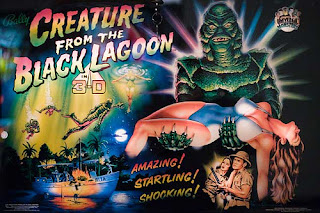Stereoscopy: noun - a device by which two photographs of the same object, taken at slightly different angles, are viewed together, creating an impression of depth and solidity.
Ok, now we know what it is (vaguely) – but how did it evolve? And how can it give your firm a competitive edge in a struggling market?
What Is It?
I’m sure everyone at some point has seen a 3D film; I remember seeing a show-case as a child with a shark jumping out of the screen… and being slightly underwhelmed. Although impressive, it was rough, unconvincing and jarring for the audience. Now 3D films and media are all around us and the medium is quickly losing its ‘disappointing’ reputation and is increasingly being described as truly impressive. Films like Avatar and other recent blockbusters have blazed a trail, along with 3D computer games and 3D televisions, which are growing in popularity every year.
Ok, let’s talk science: the basic principle behind a ‘3D’ image or film is that any media can present two slightly different images from two adjacent viewpoints; one for each eye. This gives the effect of parallax (difference of an object’s position perceived from two different viewing positions). Humans (and other front-eyed animals) use parallax to judge distance, a skill essential to our daily lives. But how does anyone present a different image to each eye?
The Evolution
Historically this effect has been achieved with coloured filters (red and green) separating out images to each eye. I’m sure everyone, at some point, has had experience of the classic ‘red and green’ anaglyph glasses; maybe a 3D comic, or some of you may even have had the misfortune to see some of the films touted around in the 80’s. The common assumption is that this was when the first 3D films arrived. In actual fact, the first anaglyph 3D film was shown (incredibly) in 1922.
From the 1930’s, the popularity of 3D grew rapidly, before its eventual fall from favour in the late 1950’s. As the years went by, popularity in the medium peaked and troughed: new breakthroughs in technology were made - film companies jumped at the chance to offer a never seen before experience to their audiences - audiences flocked to see what all the buzz was about; then, inevitably, interest plateaued until its next incarnation came onto the scene.
So, what came next? Stereovision in the 70’s allowed both of the images necessary to create a 3D effect to be on the same film reel and used a special projector lens to separate them, meaning films always remained in sync. These days, you’re most likely to encounter polarization, which is characterised by the 1980’s sunglasses you’ll be asked to don. This is preferred over the old red and green process, because it gives better colour viewing. With this method, two views are projected onto the screen with different polarisation, then the glasses only let one version into each eye, because the lenses also have different polarisation. Clever stuff. The technology just keeps getting better and better and now, with the right hardware and software, you don’t even need the glasses at all. Great news for anyone who’s ever wanted to take a date to a 3D movie!
A Competitive Edge?
“All this is interesting” you might say (assuming you’re still reading, and haven’t succumbed to death by 3D!) but what does it mean to businesses today? Well, 3D just won’t die - it’s becoming commonplace at the cinema, there’s a very real possibility that 3D TV will enter the average home in the not-too-distant future. If you want to be seen as the vanguard of modern technology by your customers, and keep one step ahead of your competitors, now is the time to put some feelers out and start thinking about how stereoscopy could be used to engage with your client base. Being on the forefront of technology could be more cost effective than you think: 3D computer monitors are cheaper than ever and most computer graphics cards support 3D output to screens and glasses. There are, of course, right and wrong times to utilise stereoscopy within any media and if you are thinking of doing it, do it right. Have it in mind from the start, craft the project to suit and complement the medium, and take advice from the experts!
If you want to have a chat about how 3D could be used to enhance your project, product or marketing, get in touch on 020 7426 2080 – we’d love to hear from you and discuss your 3D needs!





No comments:
Post a Comment